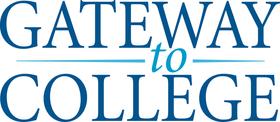Introduction
Choosing a community college can be a financially smart decision—but only if you maximise every available financial aid opportunity. For students at two-year institutions, understanding how to harness federal and state support can substantially ease the cost burden. This article walks through how community college students in 2025 can effectively access and maximise federal and state financial aid, drawing on the latest updates and expert commentary.
What types of financial aid exist for community college students?
When attending a community college, students typically draw on several categories of aid:
Federal aid
Grants (e.g., Pell Grant) that do not need to be repaid
Work-study employment opportunities
Federal direct loans (less preferred for community college students)
State and institutional aid
State grants and scholarship programmes targeted at community college students
Tuition waivers or “promise”-style programmes at the state/community‐college level
Institutional / private scholarships
College-specific awards
Private foundations and merit-based scholarships
Knowing each category allows you to prioritise efforts: first, grants (especially federal and state), second work-study, and third loans as last resort.
Twelve steps to maximise federal and state financial aid
Here is a step-by-step roadmap tailored for the community college student.
Complete the Free Application for Federal Student Aid (FAFSA) as soon as possible.
The FAFSA is your gateway to federal grants, work-study and many state programmes. Filing early gives you a better shot at limited funds.Understand your priority deadlines.
Many community colleges set priority deadlines earlier than the federal deadline (e.g., Aug 15, 2025 for some community colleges).Know key changes to FAFSA and eligibility.
Newer forms simplify the process, change the calculation (EFC → Student Aid Index (SAI)) and may open earlier/later depending on year. CollegeDataExplore state grants specific to community colleges.
For example, some states offer special community‐college grants or fee waivers through their “promise” programmes.Apply for college‐specific institutional aid.
After federal/state forms are complete, look at the community college’s own scholarships or financial-aid packaging.Maintain eligibility (satisfactory academic progress).
Most aid requires you to stay enrolled in a degree/ certificate programme, complete a minimum number of credits, and meet GPA thresholds.Fill out additional state or institutional forms early.
Some state programmes require their own application or additional information beyond the FAFSA; be sure to check your state.Maximise grant eligibility before taking loans.
Grants should be your first target; every dollar you don’t borrow now is a dollar you don’t repay later.Use the cost-of-attendance (COA) and your Student Aid Index (SAI) to evaluate offers.
The formula: COA – SAI = financial need. Understanding it helps you interpret your award letter.Check for part-time eligibility and work-study.
Many community-college students attend part-time; find out how many credits are required to qualify for aid in your institution.Stay enrolled and attend classes.
If you drop all classes or withdraw early, you may be required to repay aid or lose eligibility. Southwestern Oregon Community CollegeRe-apply annually.
Aid is not one-time; you must submit the FAFSA (and any state/college forms) each year you attend.
State vs. Federal Aid: A comparison
| Feature | Federal Aid | State/Community College Aid |
|---|---|---|
| Source | U.S. Dept of Education (via FAFSA) | State agencies & individual community colleges |
| Typical forms | FAFSA | FAFSA + state-specific form (in some cases) |
| Grants vs loans | Federal grants are large and do not require repayment | State grants often target specific populations (e.g., community college students) |
| Priority deadlines | Varies; federal deadline June 30 of following year, but earlier for priority consideration (Crimson Education) | Many states/institutions have earlier deadlines and limited funds |
| Flexibility | Broad eligibility, national reach | May require residency, attendance at a state institution, local priorities |
| Audience | All undergraduates (including community-college students) | May prioritise two-year institutions, workforce-training, local residents |
Understanding both systems allows you to layer aid effectively rather than treating them as separate silos.
Expert commentary and 2025 updates
Financial aid professionals increasingly emphasise timeliness and strategic layering of aid. The 2025 roll-out of the FAFSA has received scrutiny and improvements after prior delays.This makes early preparation more important than ever.
Additionally, in states like California, the system servicing community colleges administers billions in financial aid to over one million students annually—highlighting how state-level support is central for two-year institutions. California Community Colleges
For the 2025-26 and 2026-27 award years, updates to the FAFSA and pell-grant eligibility mean students should keep an eye on policy and technical shifts.
Practical scenario: A community college student stepping through the process
Let’s consider Alex, a 19-year-old enrolling at a community college for Fall 2025.
October 2024: Alex gathers tax documents and creates a FSA ID account before the FAFSA opens.
November 2024: Alex completes the 2025-26 FAFSA the moment it becomes available—this early submission gives access to state priority funds and federal grants.
December 2024: College awards Alex with a financial-aid letter: Pell Grant confirmed, plus state community-college grant, plus a small work-study slot.
Fall 2025: Alex registers for 12 credits (full-time) which secures the full grant eligibility. Maintains satisfactory progress so eligibility continues.
Spring 2026: Alex re-submits the FAFSA for the next year, checks state deadlines and applies for a community college-specific scholarship.
Summer 2026: Before dropping below the 60%-term point, Alex discusses implications with the financial-aid office to avoid having to return funds.
By following each step, Alex maximised available federal and state aid and avoided last-minute rushes or missed deadlines.
Key takeaways
Begin early—complete the FAFSA as soon as it opens and meet priority deadlines.
Layer your aid: federal grants, then state grants, then institutional scholarships, before resorting to loans.
For community college students, state-specific community-college programmes can offer meaningful support.
Maintain enrolment status and satisfactory academic progress to keep eligibility.
Re-apply each year and stay updated on policy changes—2025-26 is a year of adjustment in federal aid administration.
Conclusion
For community college students in 2025, maximising financial aid means understanding the combined landscape of federal and state support, acting early and systematically, and maintaining eligibility throughout the academic cycle. With the right strategy and preparation, you can significantly reduce the cost of your two-year college education and pave the way for success.















